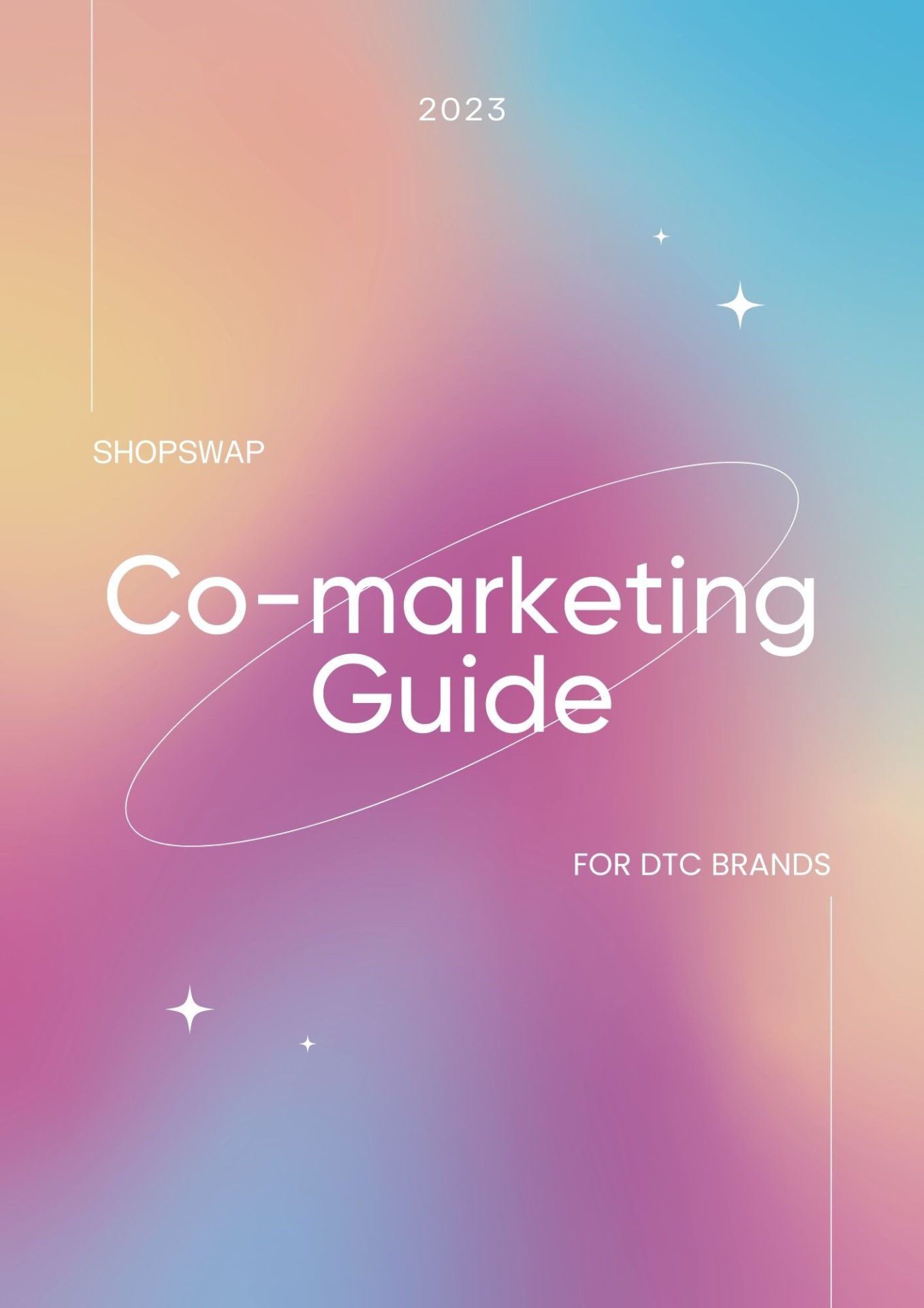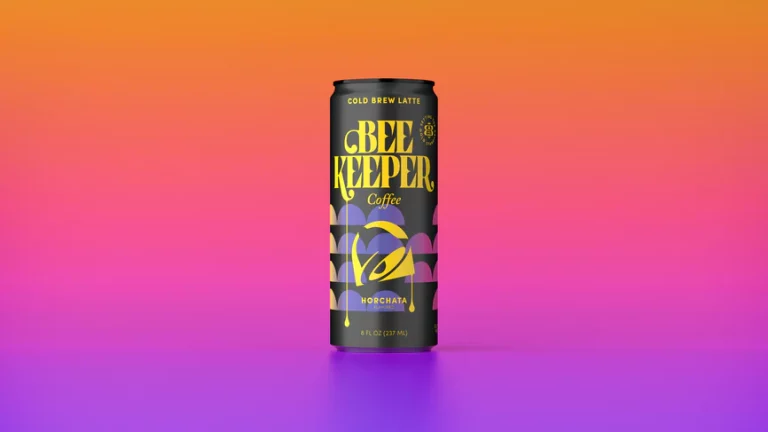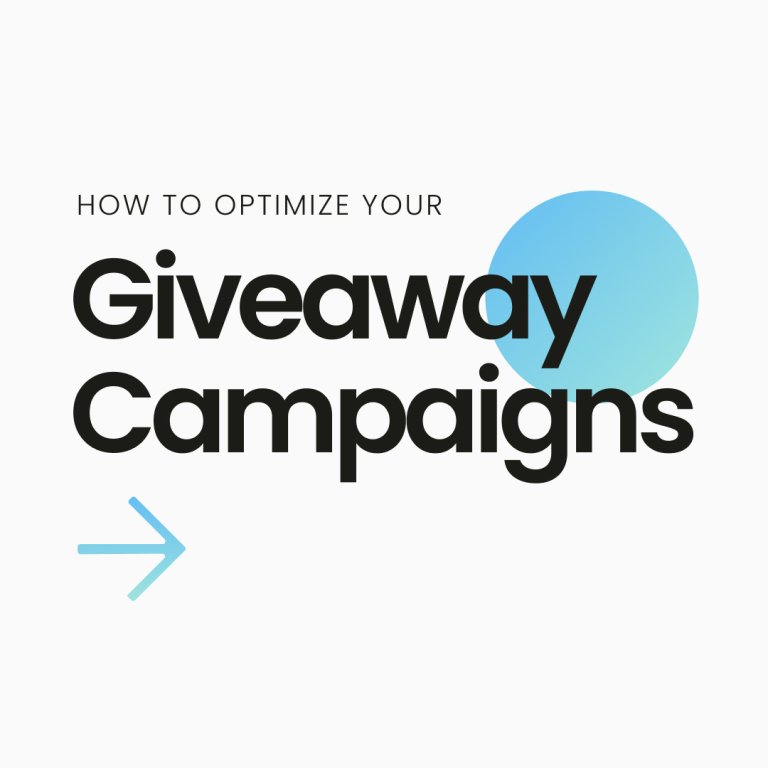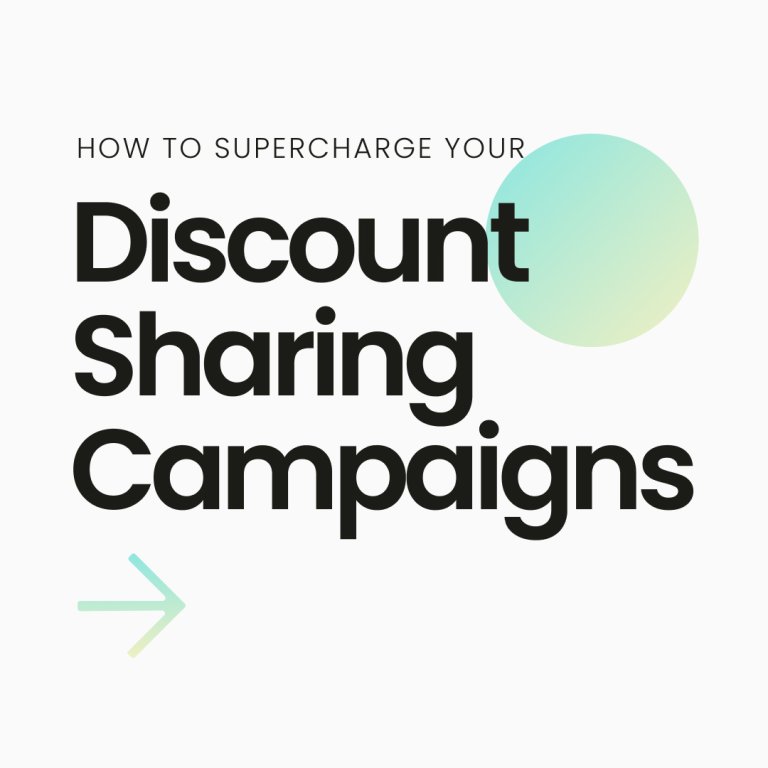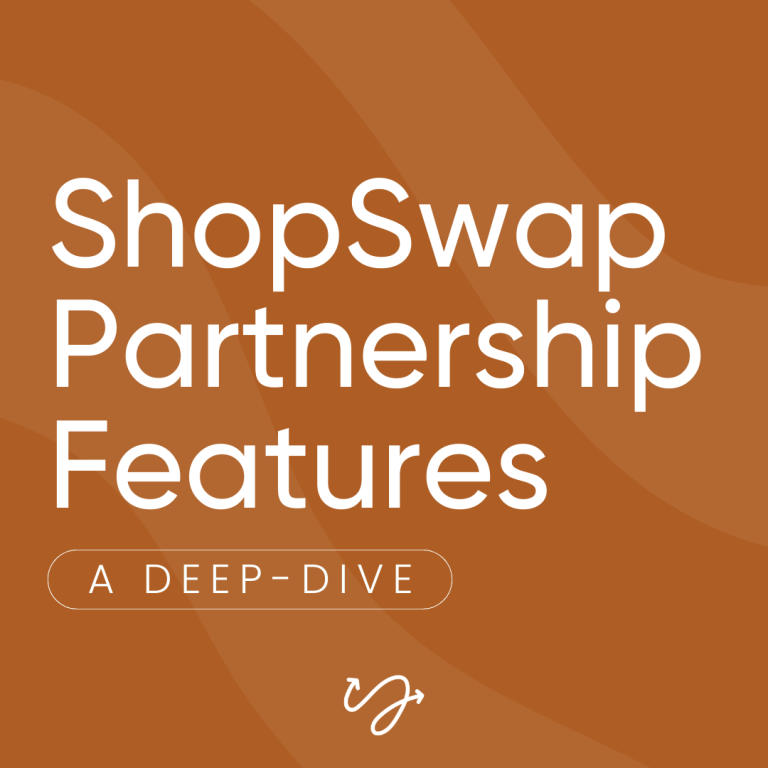Running effective brand partnerships
Tips and strategies for your next co-marketing campaign
Introduction
Here at ShopSwap, we believe in a future where E-Commerce growth is achieved through collaborative partnerships rather than paid media.
Since the introduction of iOS 14.5 and Google’s phasing out of 3rd party cookies, digital ads just ain’t what they used to be. Many brands are learning that their customer acquisition strategies were overexposed to paid advertising. Now, they are looking for alternative growth levers.
If that resonates, then this guide is for you!
From our experience helping hundreds of brands with their organic growth, we believe that co-marketing and brand partnerships are the most slept-on growth lever of all. This handy guide share’s everything we’ve learned from running these types of campaigns over the years.
We hope you enjoy it!
If you have any questions at all, feel free to hit us up via email or on twitter @olihajjar & @keyanasapp
What is co-marketing?
Co-marketing is a marketing strategy where brands partner together to expand their reach.
Typically, the brands working with each other have some similarities, such as sharing similar audience traits, e.g. both brands target ‘females interested who have a vegan diet between the ages of 25-35’.
Partner brands collaborate on promotional efforts for a co-branded offer. In a co-marketing partnership, both companies promote a piece of content or product, and share the results of that promotion.
By leveraging the relationship and reach of a partner, co-marketing campaigns are designed to deliver more leads, buzz, and awareness with less work, and crucially, less cost.
Benefits of co-marketing
Whether you are a startup striving to build brand awareness, or an established brand seeking a new narrow audience to target, co-marketing should be a part of your customer acquisition strategy.
With a well-planned partnership marketing campaign, you’ll benefit from the following:
- Greater cost-effectiveness by pooling together resources like marketing budgets and talent
- Sharing audiences of similar people who are already qualified as potential customers
- Creating and fostering a positive long-term relationship between brands
- Delighting customers with discounts, giveaways and co-branded products
Finding the right partners
Alright, so now you understand the benefits of co-marketing. But what do you need to do to make a campaign successful?
We’ll discuss all the relevant co-marketing strategies shortly, but first, we need to talk about the most important thing of all: finding the right brands to partner with.
If your partner sells a product that is too similar to yours, then you risk cannibalizing your audience. If products are too dissimilar, then your audience will be left scratching their heads as to why they’re being presented products that they have no interest in consuming. Not good.
So choosing the right partners for a co-marketing campaign is incredibly important.
The three key things to think about are:
1. Whether you sell competitive products
What you’re looking for are products that aren’t competitive, but make sense in the general context of your brand.
2. Whether you have alignment in target audience
There’s no sense in a brand targeting 15-21 year old women to partner with a brand targeting 65+ men.
3. Whether you have alignment on values
This is incredibly important. If you’re a sustainable brand, find other sustainable brands to partner with. If you’re women-led, do the same. Values are what draw people to your brand in the first place. Shared values are what will draw your partner’s audience to your brand too.
To make your job of finding partners easier – check out ShopSwap and register your brand!
Now that we’ve found the ideal parter, it’s time to talk strategy!
Co-marketing strategy guide
So you want to explore a co-marketing campaign, and you’ve found an epic partner… now what?
Well, now it’s time to sit down with your partner and decide what kind of campaign you want to run. Below we lay out all of the options that we’ve had success with in the past, along with a checklist of all the tasks you need to complete to get it launched.
Let’s dive in
Social Media Cross-Promotion
This partnership works best for brands with significant social followings
The strategy
This is a super easy-to-implement low-lift campaign that focuses on lead-gen and audience sharing.
The goal is a single post across several channels promoting your partner’s brand and products. The key is to make the content look as organic as possible.
Focus on the values you share with your partner brand to move your respective audiences to check out your partners!
Examples
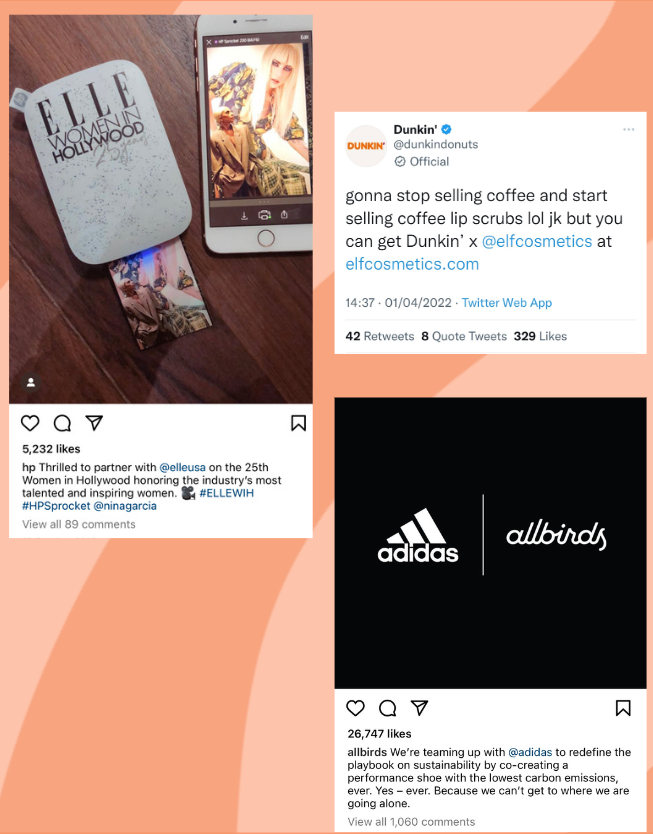
Step-by-step checklist ✅
Please bear in mind that this is just a guide.
Feel free to adapt the strategy to however best suits your brand and the campaign you’d like to run.
- Discuss the messaging behind the cross-post. If both brands value sustainability, make that the focus of the campaign. It’ll make it much more likely to convert since your audiences already care about this value!
- Determine which platform(s) you’d like to run the campaign on. Consider where your following is largest and most engaged.
- Discuss whether you’d like to include some sort of discount for people coming from the campaign. Adding a discount will improve conversion.
- Figure out your strategy for getting people to provide their email address. This could be to access the discount or build a specific landing page.
- Pull together the creative assets for the campaign. A combination of stories, posts and multiple channels works best. A tool like Canva is super useful here!
- Coordinate the post timeline.
- Launch!
Email cross-promotion
This partnership works best for brands with significant email followings
The strategy
In this partnership, brands promote each other to their email audience.
This is predominantly a lead-gen strategy designed to target a highly aligned audience that is already engaged over email.
You want to keep this one pretty light-touch. Think of it as a shoutout to a brand you think is doing kick-ass things in the market.
Again, it will be useful to highlight a specific value that resonates with your audience here.
If you’re both women-led organizations, lead with that.
You’ll want to link this with a discount code as a way to gather email addresses.
Examples
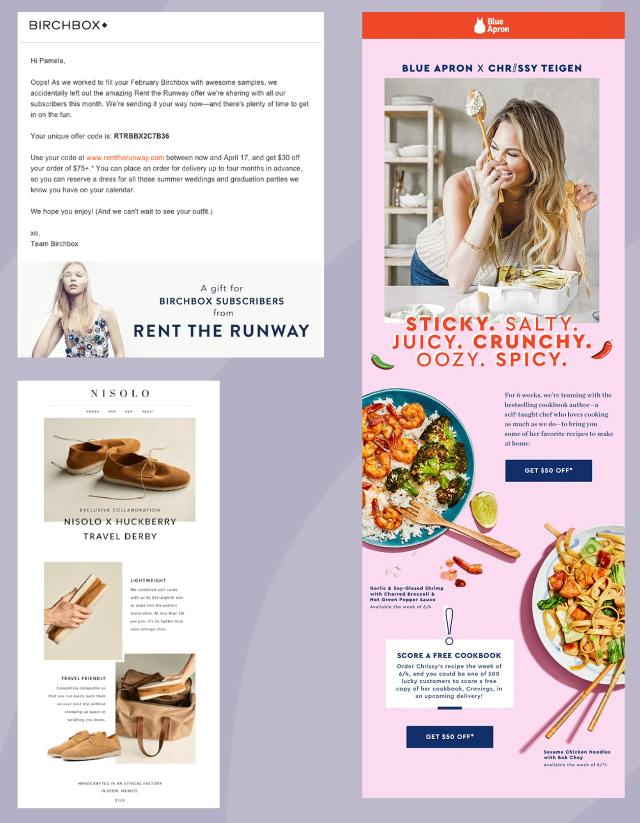
Step-by-step checklist ✅
Please bear in mind that this is just a guide.
Feel free to adapt the strategy to however best suits your brand and the campaign you’d like to run.
- Discuss the messaging behind the cross-post. If both brands value sustainability, make that the focus of the campaign. It’ll make it much more likely to convert since your audiences already care about this value!
- Discuss if you’d like to include some sort of discount for people coming from the campaign. Adding a discount will improve conversion.
- Figure out your strategy for getting people to provide their email address. This could be to access the discount, or build a specific landing page.
- Build out the creative for the newsletter block. Use whatever email marketing software that you’re currently using!
- Coordinate the post timeline.
- Launch!
Gift-with-purchase
This partnership works best for brands with low order value products or samples.
The strategy
This strategy is all about getting physical product into potential customers’ hands.
First of all, you’ll need to figure out what kind of gift you’d like to offer your partner’s customers. It’s best if you also offer a discount code along with the gift in order to convert the customers who receive it.
Then, it’s a matter of shipping your gifts to your partner, so that they can include them in future orders. Your partner will do the same for you.
You can either include gifts in orders above a certain value, orders of specific products, or all orders. Your partner will do the same for you.
It’s also best if you announce the gift partnership on all of your respective social channels, newsletters etc…
Examples
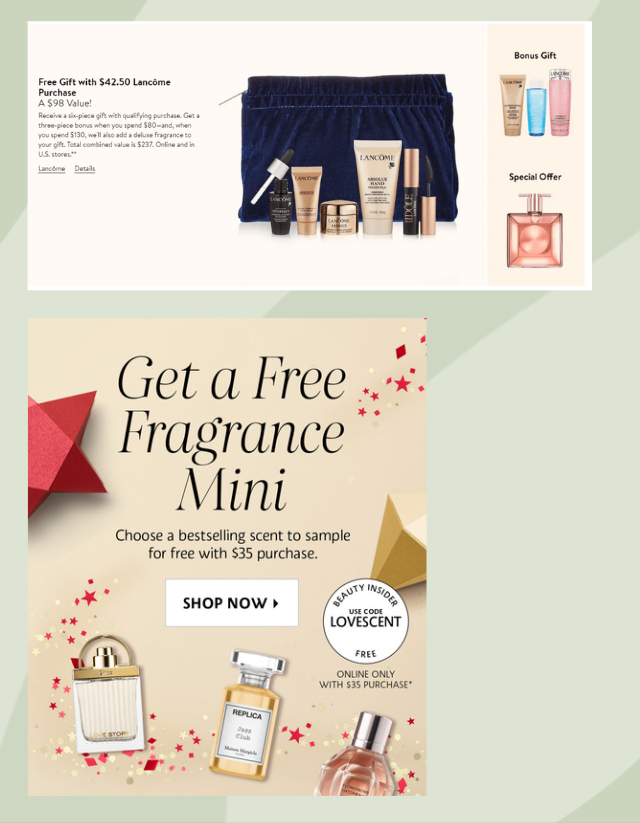
Step-by-step checklist ✅
Please bear in mind that this is just a guide.
Feel free to adapt the strategy to however best suits your brand and the campaign you’d like to run.
- Determine the gift each partner will include in the other’s orders.
- Discuss if you’d like to include some sort of discount for people coming from the campaign. Adding a discount will improve conversion.
- Figure out your strategy for getting people to provide their email addresses. This could be to access the discount, or build a specific landing page.
- Determine the length of the partnership/the number of orders the partnership will last.
- Ship product to your partner.
- Launch!
Giveaway/contest
This partnership works well for brands with low order values or samples.
The strategy
Come up with a generous prize pool consisting of both of your products to giveaway as a prize for a contest (the better you make the prize, the more engagement you’ll get).
You and your brand partner announce a joint contest on social media accounts. One of you controls organizational issues and distributes awards.
Participation conditions are typical — follow organizers, like and share the post, comment, answer a question, etc.
If you want to remove some of the organizational burden, try using a tool like Gleam’s $49 Competitions Pro Plan.
The goal with this strategy is to secure as many warm leads as possible for future marketing purposes.
Examples
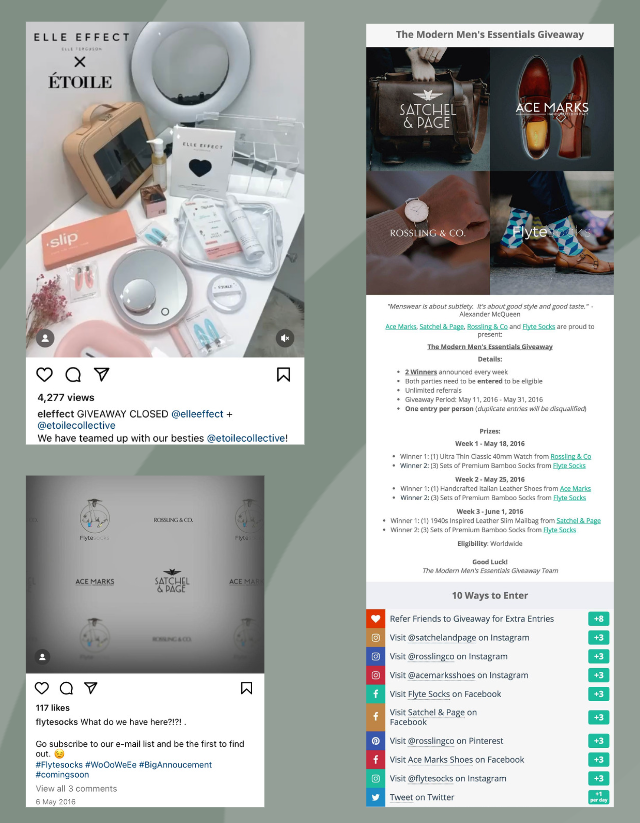
Step-by-step checklist ✅
- Determine each brand’s offering. The better you make the contest prize, the more engagement you can expect from the campaign.
- Determine which platform(s) you’d like to run the campaign on. Consider where your following is largest and most engaged.
- Pull together the creative assets for the campaign. A tool like Canva is super useful here!
- Build the giveaway terms and tasks. Check out Gleam for this!
- Plan your launch timeline.
- Launch!
Co-discount
This partnership works well for all brands.
The strategy
In this partnership, brands share discount offers with their audiences.
Instagram and Twitter and Email are the main channels here, though Facebook, TikTok and Pinterest can work great, providing brands have a decent following there.
Brands create a post with a time-limited discount incentive for their products to be shared on their partners’ pages. E.g. 30% off anything in store for the next two weeks.
We recommend linking to a landing page where buyers input their email to have their discount codes sent out to them. This will result in more lead capture from people who input their email, but don’t end up buying anything now.
The goal of this strategy is to secure new buyers of your product, along with some leads that you can market to long term.
Examples
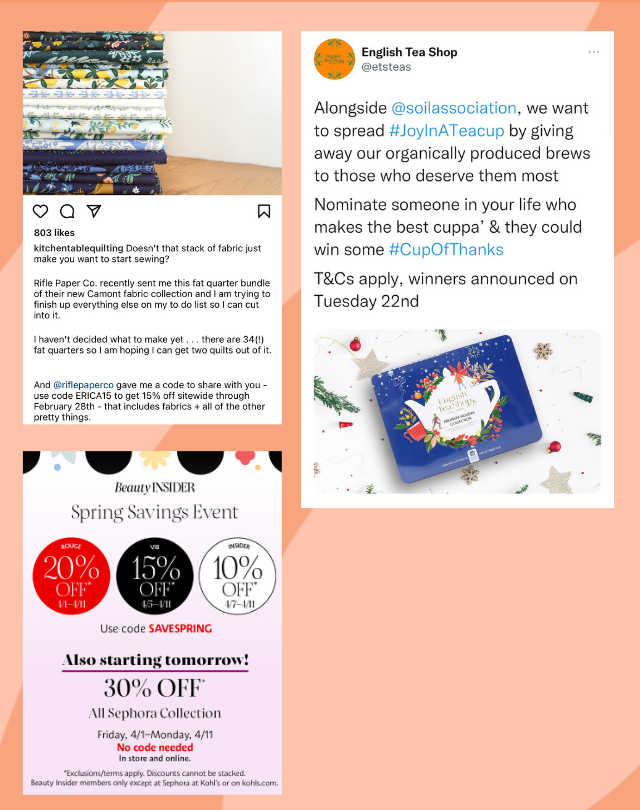
Step-by-step checklist ✅
Please bear in mind that this is just a guide.
Feel free to adapt the strategy to however best suits your brand and the campaign you’d like to run.
- Determine each brand’s offering. The better you make the discount, the more engagement you can expect from the campaign.
- Determine which platform(s) you’d like to run the campaign on. Consider where your following is largest and most engaged.
- Pull together the creative assets for the campaign. A tool like Canva is super useful here!
- Build the discount flow. Think about whether you want people to input their email to access the discount or whether you will offer a simple discount code. Codes are great as they reduce friction, but adding the email friction allows you to gather emails from people who might not buy right away.
- Plan your launch timeline.
- Launch!
Long-form content collaboration
This partnership works well for all brands with strong content-led growth channels.
The strategy
With this strategy, we’re talking about a guest blog, podcast appearance, youtube video, or webinar.
Content collaborations are ideal long-tail strategies. Unlike the other strategies we’ve mentioned, content collaborations will continue working for your brand for a long time into the future, assisting with brand awareness, discoverability and SEO.
For this strategy, you’ll need to figure out the topic you’d like to present in the collaboration, the medium it’s presented on and how you’ll repurpose the content to multiple channels in order to maximize reach.
Once you have those figured out, content collabs are a breeze!
Examples
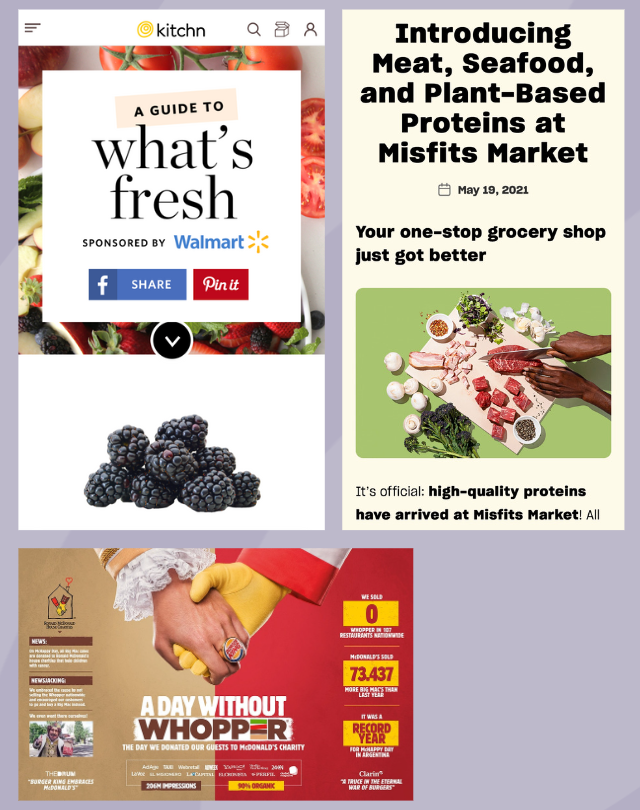
Step-by-step checklist ✅
Please bear in mind that this is just a guide.
Feel free to adapt the strategy to however best suits your brand and the campaign you’d like to run.
- Determine the topic of the content collaboration
- Determine the ideal medium for the content – if you can recycle the content to several mediums, even better!
- Produce the content (Be sure to link out to relevant sales opportunities for both partners).
- Publish through each others’ channels and reap the rewards long-term!
So there you have it
The basics of co-marketing along with 6 killer strategies to make it work for your brand.
If you’re interested in co-marketing and the future of e-commerce advertising, then we’d love to talk to you!
You can reach us anytime via email or on twitter @olihajjar & @keyanasapp

